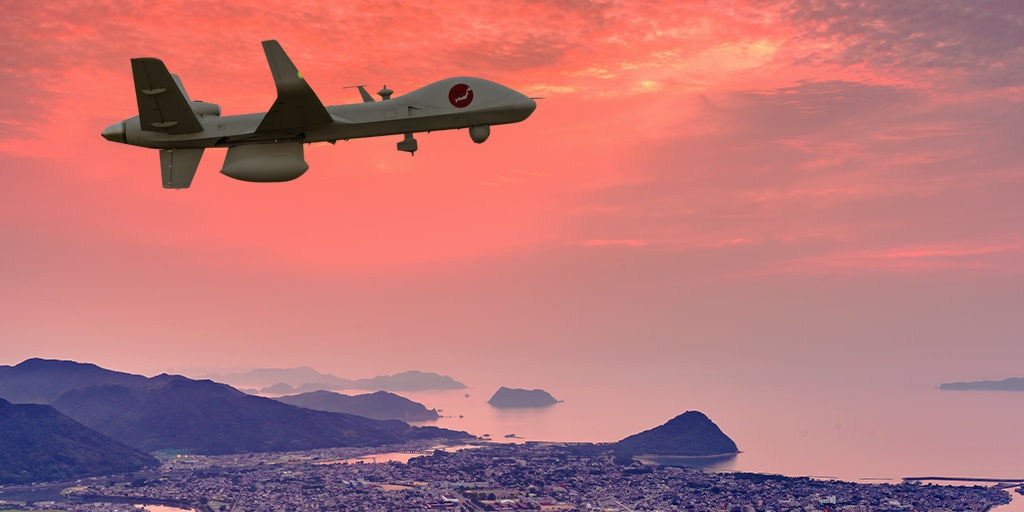Japan has come up with a new strategy to thwart China’s hypersonic missile threats. China and Japan have contested claims over a group of uninhabited islands that fall in the East China Sea.
Inspiration4: World’s 1st All-Civilian Space Crew Train On MiG-29 Fighter Jet – Mission Commander
In a press conference held in June, Japanese Prime Minister Yoshihide Suga firmly said, “The Senkaku Islands are under our control and are unquestionably our territory, historically and under international law”.
“We think it is extremely serious [matter] that these activities continue…We will respond firmly and calmly to the Chinese side,” he added.
Both Japan and China lay claim to Senkaku Islands (Diaoyu in Chinese), which include five uninhabited islands and three barren rocks, making a total area of not more than 5 sq km.

China’s Foreign Ministry said, “The Diaoyu Island and its affiliated islands are an inherent part of China’s territory, and it is our inherent right to carry out patrols and law enforcement activities in these waters”.
Last month, Japan hit China where it hurt the most after it raised the Taiwan issue. Japanese Deputy Prime Minister Aso Taro said that his country “may take action if China invades Taiwan”.
China termed this statement as “dangerous” and reiterated that it will not permit any country to interfere in any matter related to Taiwan.
ZERO Buyers! Boeing ‘Hard Sells’ Its F/A-18 Super Hornets To Indian Navy; Global Customers Give It A ‘Royal Snub’
Japan’s Drone Defense System
Keeping this tense relation in mind, Japan is considering using unmanned aerial vehicles or drones to detect Chinese hypersonic missiles.
According to reports, these drones, which will be equipped with infrared sensors, will be able to send an early warning of potential attacks by hypersonic missiles.
This drone-based detection system has been proposed as the country’s first line of defense against hypersonic missile threats from China and Russia as well as to counter a new class of ballistic missiles, which are known to carry hypersonic vehicles.
The Japanese Ministry of Defence announced this plan on August 7, which is described as Tokyo’s “rush to develop capabilities to counter the development of hypersonic weapons”, according to Sankei Shinbun, a Japanese newspaper.
According to reports, the unmanned aerial vehicle will be equipped with an infrared detection system, which will operate in the airspace close to the enemy and can detect any hypersonic missiles flying at Mach 5 and above. The technological verification of this system was completed in 2019.
Flying at extremely high speeds, hypersonic weapons are known to evade the conventional anti-aircraft radar. This delays their detection and as a result, the interception is also difficult. To overcome this situation, unmanned aerial vehicles are being considered to provide early detection as the existing missile defense systems are not competent enough to counter these hypersonic weapons.
“The maneuverability and low flight altitude of hypersonic weapons could challenge existing detection and defense systems”, a US Congressional Research Service report on hypersonic missile defense stated in June this year.
“For example, most terrestrial-based radars cannot detect hypersonic weapons until late in the weapon’s flight due to line-of-sight limitations of radar detection. This leaves minimal time for a defender to launch interceptors that could neutralize an inbound weapon”.
Yesterday, the JASDF Southwestern Air Defense Force’s fighters scrambled to cope with a suspected intrusion into Japan’s airspace over the East China Sea.
The JSDF continues to responding to protect our territory and peace for the people of Japan 24/7. (a sample image) pic.twitter.com/ZvScYCYOze— Japan Joint Staff (@JapanJointStaff) July 9, 2021
The Japanese drone-based detection system will have multiple UAVs, which will continuously monitor the airspace and transmit the data gathered by them to the ground stations.
Unmanned aircraft is a field in which the Japanese military has been increasingly investing in although it is not yet clear what type of drone will be used in this mission, The War Zone reported.
In addition, the Japanese government is aiming to build a “satellite constellation” that puts a large number of small artificial satellites into low earth orbit in space as a countermeasure against hypersonic weapons and wants to lay a multi-layered surveillance network.
Message To The US? China’s J-20 Stealth Fighter Jet Makes Debut In Joint Military Drills With Russia
China has stepped up the development of hypersonic weapons as it made huge investments in test facilities and engineering expertise.
The country had claimed to have successfully tested the DF-17, a road-mobile medium-range ballistic missile (MRBM) designed to launch a hypersonic glide vehicle (HGV).
It has a reported range of 1,800-2,500 km. Other HGVs include the DF-ZF, with a range of 1,600-2,400 km and a speed of Mach 5 – Mach 10. China is also reportedly deploying these vehicles on its DF-21 and DF-26 theater-range ballistic missiles.
— Written by Kashish Tandon